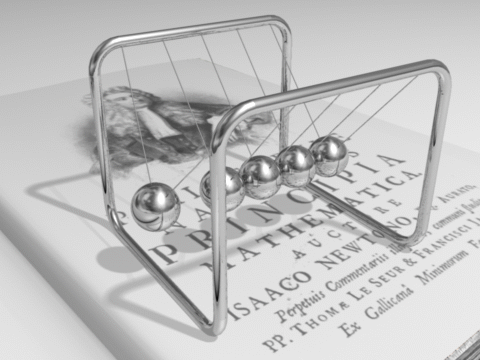Alessandro Spadoni and Chiara Daraio of Caltech have designed a device called a 'nonlinear acoustic lens' to create what they call ‘sound bullets’, highly focused, high amplitude acoustic signals.

Animation of Newton’s Cradle by Dominique Toussaint (DemonDeLuxe), August 8, 2006
The lens consists of an array of twenty-one parallel chains, each containing twenty-one 9.5 mm stainless steel spheres (though other materials or shapes should also work, according to Daraio). A striker is used to start a pulse at one end, and this shockwave passes through the entire lens as through a Newton’s Cradle (above). As the sound waves exit the final spheres, they are amplified a hundred times. If the starting pulse were a gently spoken word, the end result would shatter eardrums.

Acoustic lens prototype.
Credit: Spadoni & Daraio/Caltech
Although their device is no more than a proof of concept at this stage, the researchers see a multitude of uses for it in the future. For example, if used in place of ultrasound, their acoustic lens should produce a much clearer image with less noise and much deeper penetration of internal tissues. Because the resulting shock waves can travel through solids, liquids or gases, the ‘sound bullets’ could be used to examine bridges or other nontransparent objects for internal cracks. The device could even be used as a 'sound scalpel' in surgeries, or to obliterate tumors or diseased tissue. Or to blow stuff up. Hmm.... there's that double-edged sword.

Potential employment of a nonlinear acoustic lens to generate a sound bullet for hyperthermia procedures. The colored spheres depict nonlinear acoustic waves traveling within sphere chains. The curvature of the wavefront is induced by precompressing each row, and is used to generate appropriate time delays to focus acoustic energy at a desired focal point. The stylized image depicts a sound bullet superposed onto a brain MR image provided by Mike Tyszka of the Caltech Brain Imaging Center.
Credit: Spadoni & Daraio/Caltech
No comments:
Post a Comment